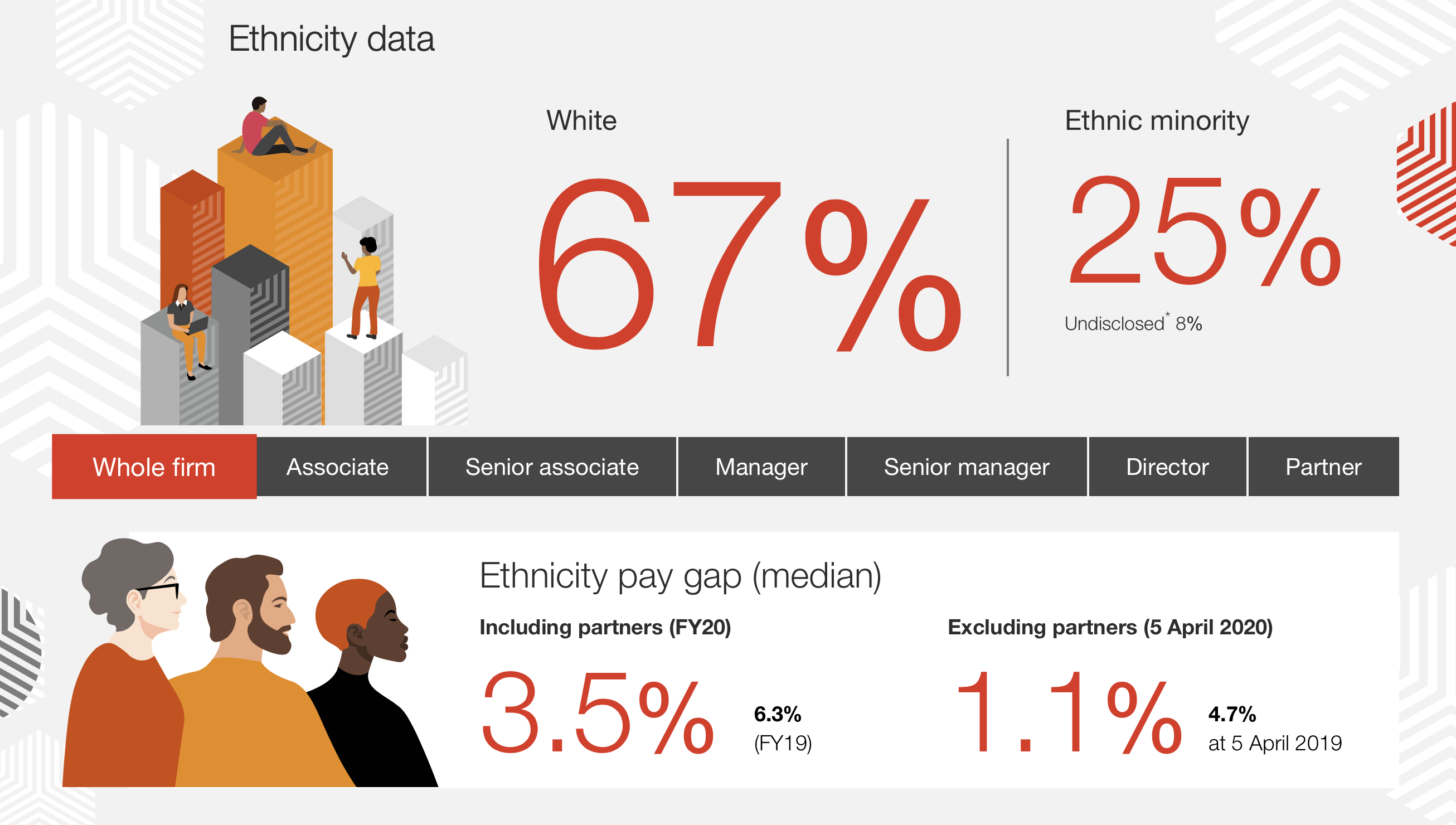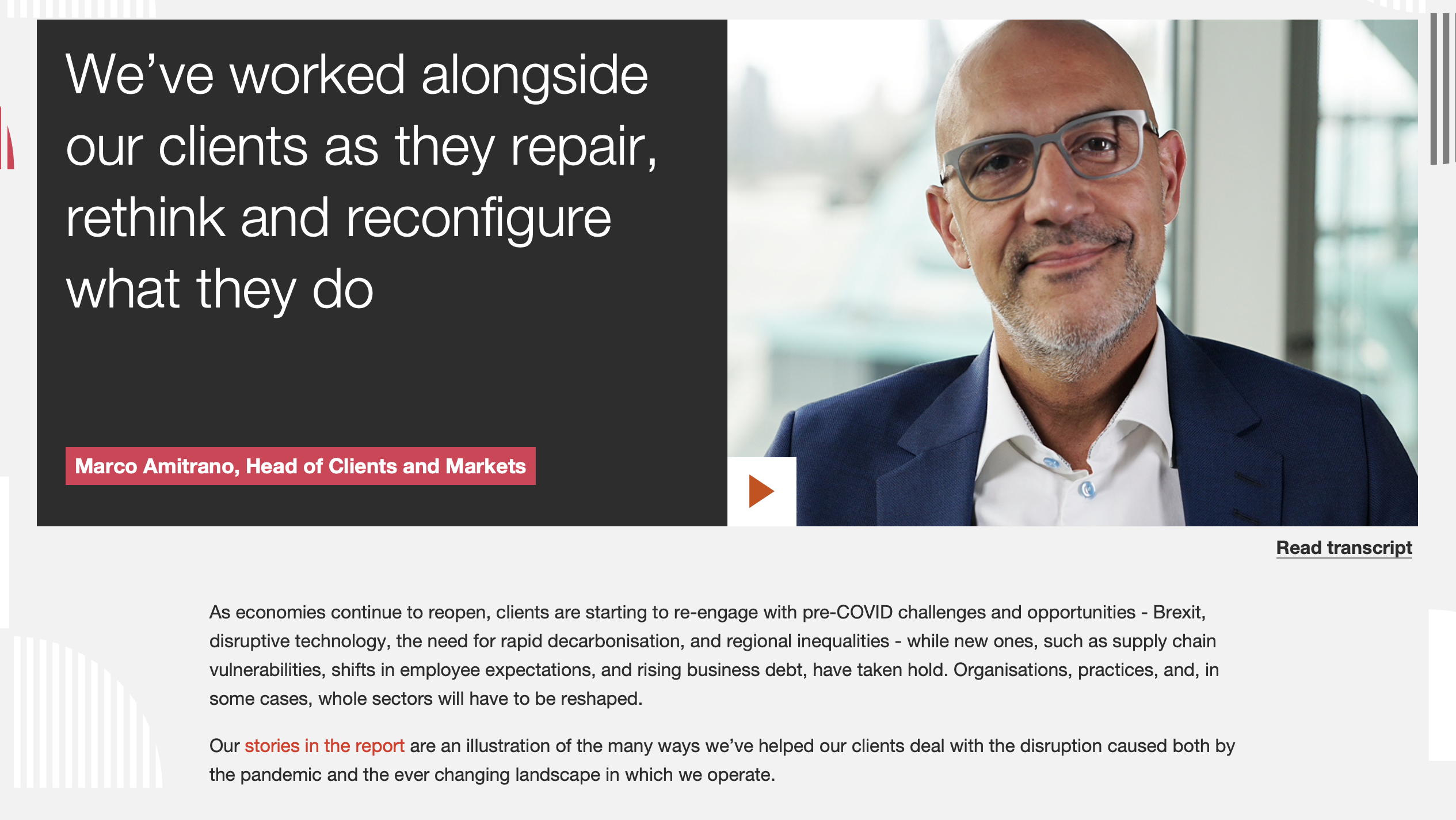General
Digital Audit: What’s new?

A growing number of companies are realising the value of adapting their reporting to a digital environment, increasing the effectiveness of their communications, particularly within an economic climate changing at pace. Now more than usual, accessibility and engagement are key and aligned to the digital medium.
Connection and connectivity across channels has always been vital and digital reporting continues to present an opportunity for organisations to tailor their report content to targeted audiences. Digital enables the report to work harder and introduces more engaging methods of communication. It can feature specific and key messages throughout the year – as opposed to only when the printed annual report is published, and tell the corporate story in a unique and continuous way.
At Gather we have conducted research into international online reporting over the past year. Our review focuses on the interesting and emerging ways that companies are now presenting their report content online, what they have chosen to put on their website, where, why and the benefits it brings.
One company to note is Pricewaterhouse Coopers (PwC). Their 2020 report stands out as a prime example with both their website design and content supporting the key messages of their report. They also demonstrate an interesting response to the regulatory focus on human capital and employee voice. This is a new area and some interesting highlights from this section of the review include:
Workforce Engagement
With their people being such an important part of PwC’s business, they go to great lengths to emphasise how they have supported their employees and clients during the pandemic.
The Financial Reporting Council (FRC) have stated that reporting on employee engagement needs to greatly improve, and PwC is a front runner in this area through their emphasis on workforce engagement.
Touting their continued investment in technology, PwC were able to help their employees smoothly transition to working from home at the beginning of the pandemic. This strategic emphasis on technology demonstrates to investors that PwC don’t neglect investing in their employees, who are their biggest asset. The company also flexes its technological capacity by surfacing key stats, such as the hosting of over one million Google Meets within the first 100 days of working from home.
Another novel inclusion is a video message from PwC’s Chief People Officer (CPO) in their online report. In this message, the CPO states how employees are at the heart of everything the company does and alongside supporting them with their work, employees physical and mental wellbeing is a company priority. Beneath, they showcase their engagement programmes and benefits afforded to employees. This content and the engaging ways in which PwC have chosen to present it, demonstrated their commitment to their human capital.

Diversity and Inclusion
Another good feature of PwC’s online reporting is the inclusion of all the data surrounding gender and ethnicity imbalances and presenting it in a clear and interactive way. Diversity has persistently been a problem within large organisations. However, reviews such as the Hampton-Alexander and Parker Reviews have published reports with the aim of improving the gender and ethnicity balance in the FTSE 100 leadership, demonstrating the importance of this issue. PwC’s inclusion of this data reinforces the competitive advantage they gain from having diverse teams and explains the benefits which include being subsequently more adaptive and able to problem-solve. In addition, providing this data openly creates a sense of accountability for the company, reinforcing their corporate responsibility credentials and ensuring that they continually address diversity disparities within the firm, especially at higher senior manager and partner levels. Going beyond their legal requirement to report on diversity data emphasises to investors PwC’s commitment to their workforce and that they are paving the way for other companies.

Video benefit statements
Another example from PwC that sets them apart from their competitors within the annual report, is their inclusion of a section dedicated to their clients and how they have helped them during the pandemic. By adding a video statement from their Head of Clients and Markets they are able to continue their client-focused story with a more personal touch. They continue the personal touch through referring to clients, employees, and communities as ‘our’. This subtle tone of voice shows an attempt to connect themselves with all those that they are involved with both directly and indirectly. Furthermore, beneath the statement, they have showcased multiple client-focused stories and updates, evidencing their work over the difficult past year.

Our research uncovered numerous features and trends which are having a considerable impact on digital communications. Reviewing best-in-class examples, PwC is leading the way. To summarise our findings, online reporting has continually grown in prominence and importance year-on-year and it continues to do so. In the years to come, digital technology will enable companies to improve their ability to connect with stakeholders, ensure key messages land at the right time, vastly improve targeting through tracking and accessibility through downloads. It may even support with verification for auditors, saving time and increasing efficiency. Virtual reality, augmented reality, and 360-degree video technology, all of which are already available, may also be used to further highlight key messages within the annual report in an engaging and interesting way.
If you would like to hear more about our digital audit and explore how the insights could benefit you, please contact Will Davenport at will@gather.london